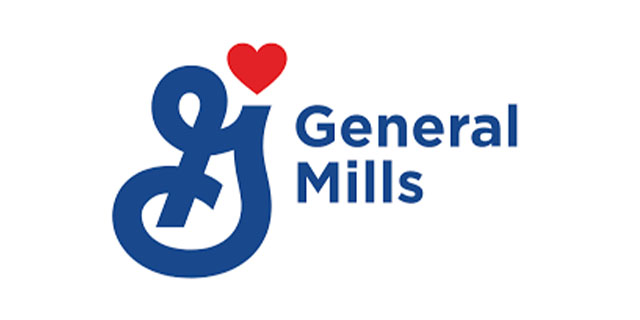Consumer Preferences Survey Shows How Ethnic Identities Reflect in Purchases of Travel, Health Care, and Other Services
May 05, 2022 | Report
Our survey of 2,000 US consumers with Asian, Black/African-American, Hispanic/Latino, and White (Non-Hispanic) heritage shows that looking at consumer preferences and behaviors through the lens of ethnic origins can provide valuable, and sometimes unexpected, insights for marketers for positioning and targeting strategies.
Apart from age and income, consumers’ racial/ethnic origins are an important factor in purchasing. An ethnic perspective is increasingly important for companies with the 2020 Census showing 61.6 percent of the US population is White only. Moreover, population growth is primarily coming from non-White populations—more than half of the 2010-2020 increase was driven by an increase among Latinos.
The latest edition of our research on multicultural consumers, made possible by a grant from General Mills, focuses on services, including travel plans and any impact of sustainability offerings, as well as on leisure activities, restaurants, healthcare, financial services, education, childcare, pet care, fitness, and considerations related to online and brick-and-mortar shopping channels.
Within broader trends such as reduced business travel, the shift to digital workouts, and an expectation of an increase in hybrid or fully remote work, our results highlight differences in behaviors and attitudes among consumers influenced by ethnic origins, apart from other consequential demographic factors such as age and income.
A more in-depth view of survey findings can be found in the Chartbook that accompanies this report.
Insights for What’s Ahead
Black and Latino consumers in higher age and income groups are most likely to use services to express their ethnic identity. Services firms can consider designing the customer experience accordingly. Digital media, restaurants, and travel are the leading services categories for consumers to express their cultural identity. Non-White consumers, as well as consumers under 35 years old and consumers with household income above $75,000, are more likely to use a range of services as a way to express their ethnicity. For these segments, additional services categories that serve their cultural expression include education, health and financial services, fitness, out-of-home entertainment, and personal care services. Companies can consider designing the customer and employee experience and communications to facilitate the expression of such sentiments.
Symbols of success can motivate spending. Decoding the underlying psychology is valuable for consumer marketing. Apart from wanting to express cultural identity, different racial segments that spend relatively more money on services such as education and financial investments may partly be driven by what they consider success in life. For example, for Latino consumers, owning a home and business, and sending their children to college signifies success more than it appears to for other consumer segments. For Asian consumers, who skew toward higher income groups, financial achievements are relatively more important. Our survey shows Asian consumers use banking, investing, insurance, and financial advisory services more than others.
Overall, non-White travelers express most interest in eco-friendlier transportation and accommodation. To foster sustainability at scale, it’s up to travel companies to offer comparable sustainable options, including clean transportation. Up to 37 percent of respondents in the $75,000+income group are willing to make travel choices that consider sustainability. These include using eco-friendly modes of transportation and booking environmentally oriented accommodation. But overall, a third of all respondents plan to travel more. And about half are not planning to change specific travel behaviors. These findings underline the point that although many consumers value sustainability, only a portion are willing to change their behavior, especially when it means sacrificing choice, price, enjoyment, or convenience.
What consumers value most about offline and online shopping differs by age, income, and ethnicity. Such insights can help companies fine-tune their channel design, targeting, and messaging. Stores serve increasingly many functions. Younger shoppers value socializing and fun, more than the 35+ age groups. Older segments appreciate practical benefits in stores, such as being able to inspect products and acquire them on the spot. Younger Black shoppers value store associates’ help relatively more than other segments. These preferences can provide input for designing the in-store experience, especially in regions with diverse consumers.
Certain features appeal differently to age and income groups. For example, the convenience of delivery/pick-up of online orders and ability to touch and buy on the spot in offline channels appeals to consumers over 35 while digital coupons are a key benefit of online shopping for people under 35.
At the same time, there are benefits that are particularly attractive to different ethnic segments. For example, the ability to save time by shopping online appeals particularly to Latino and Asian shoppers. The entertainment aspects of a physical store are more likely to appeal to the Latino segment as well as younger White shoppers, and the ability to socialize with family/friends appeals to Black shoppers overall as well as generally younger, especially non-White consumers. These preferences may also be related to other factors such as location of residence and family status.
Attitudes and behaviors differ across cultural identities even within the same age and income groups. Thus, marketers—and HR teams—need to understand ethnic differences to be able to improve experiences. Survey responses show notable differences regarding preferences and purchase behaviors across ethnic segments, even within the same age and income groups, including when it comes to restaurants, vacations, and out-of-home leisure activities, exercise habits, and expected travel behavior post-pandemic due to sustainability considerations. To be sure, there are also age- and income-based differences, especially regarding services that align more with different age/life stage or income groups, as well as in using health care services and childcare.
AUTHOR
- CREATE AN ACCOUNT SIGN IN
-
Only available to members. Become a member.











